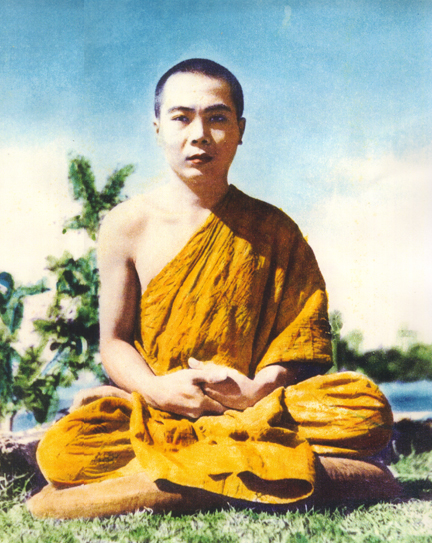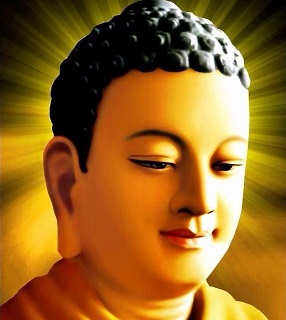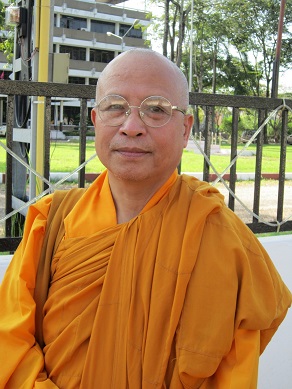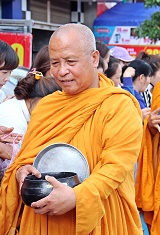Trang nhất » Tin Tức » ENGLISH
THE DATE OF THE BUDDHA
Chủ nhật - 15/10/2017 13:33The exact date of the Buddhais still the object of disputes. Several methods have been often used to calculating the date of the Buddha. But most of them are unreliable, especially those which either depend on very late material or are of dubious nature in one way or the other. Here we propose to discuss only the most important hypotheses.
Before moving to the real issue, it is important to note that the dates of accession of both Candagupta and Asoka are inextricably linked to the date of the Buddha. Therefore, these two dates need to be determined before any work can be done on the date of the Buddha.
It is more or less certain that Candagutta started to rule in the year c.317 BC, though some scholars have put it a little earlier. On the basic of the names of various Greek kings mentioned in the 13th Rock Edict, the date of Asoka’s accession maybe put in C. 268 BC and the consecration took place in the fourth year of his reign (i.e. after 3 years in C. 265 BC)
The sources used for the study of the date of the Buddhamay broadly be divided into as follows :
1.THE LONG CHRONOLOGY :
The Long Chronology is mainly based on the Southern Buddhist legends which are contained in the Dipavamsa and the Mahavamsa. The cornerstone of the Long Chronology is the number 218 which is given as the number of years that elapsed between the death of the Buddha and the consecration of Asoka, so the Buddha’s death may be followed :
* Asoka ascended the throne = C. 268 BC
* Asoka’s consecration took place (268 – 3) = 265 BC
* Asoka’s consecration took place (268 – 3) = 218 years AB
Death of the Buddhatook place (218 + 265) = C. 483 BC
2.THE SHORT CHRONOLOGY :
The short chronology is based on the testimony of the Indian sources and Chinese and Tibetan translations.
In all the recessions of the Vinaya pitaka, we are told that the Buddha died 100 or 110 years before the consecration of Asoka. In other words, the Mahaparinibbana should be dated in the year 368 or 378 BC. The theory of 100 years, according to Northern Buddhist legends, is widespread throughout to world. H’suan T’sang points out that “at the time of his death, the Buddha said that : a hundred years hence there shall be a King Asoka”.
3.THE DOTTED RECORD :
This material is contained in the Li Tai San Pao Chi written by Fei Chang Fang and have been used as a major pillar for supporting the Long Chronology. According to this text, after the passing away of the Buddha, Upāli collected the Vinaya and observed the Pavāranā on the 15th of the 7th moon of the same year and he marked a dot (on a record) and placed it close to the Vinaya text. Thereafter this was repeated every year as a traditional practice. The tradition had been handed down from teacher to teacher for generations. Till teacher Sanghabhadra’s time, on the 15th of the 7th Moon, in the 7th year of Yung-Ming (489 AD), the total amounted to 975 dots in that year. A dot is counted as a year.”
Thus, on the above basic, we get:
* The Buddha’s death = 489 AD – 975 = 486 BC
* Asoka’s consecration = 486 BC – 218 = 268 BC
Therefore, the Mahāparinibbāna of the Buddhatook place in the year 486 BC. But W. Pachow said that three extra dots were possibly added to the record after 489 AD. Thus, the actual date of the Mahāparinibbāna should be :
489 AD – 972 = 483 BC.
4.LIST OF THE PATRIARCHS AND KINGS :
In the chronological system on which the Dipavamsa and Mahavamsa are based the succession of the great teachers who are considered as the custodians of the Vinaya from Upali down to Mahinda plays an important part. This succession is in order as follow : Upali, Dasaka, Sonaka, Siggava….According to the Dipavamsa :
- Upali kept the Vinaya for 30 years
- Dasaka ……………. 26 years
- Sonaka …………….. 8 years
- Siggava ……………. 30 years
Thus, the total number of years from Upali to Siggava is 94 years. But we are told that Siggava died in the year c 3003 BC. From it, we got :
303 + 94 = c. 397 BC.
The hypothesis is also supported by the calculation to the continuing of Kings ruling from Ajatasatthu’s to Kalasoka’s reign.
In conclusion: It may be said that the Buddhadied in the year c. 397 BC or allowing for error, a couple of years before or after this date which is not very far removed from the short chronology.
Paper 5 : THE FOUR NOBLE TRUTHS
The Four Noble Truths are the basic doctrines of the Lord Buddha. In the Mahaparinibbanasutta, the Buddha said that it is through not understanding the Four Noble truths that we have to wander so long in this path of rebirth. The four noble truths are : dukkha, the cause of dukkha, the cessation of dukkha and the way leading to the cessation of dukkha.
I. THE FIRST NOBLE TRUTH:
In his first sermon delivered at Varanasi, Lord Buddha has given an account of what he meant by suffering in the passage :
“Now, this, O Bhikkhus, is the noble truth of Suffering, birth is suffering, decay is suffering, illness is suffering, death is suffering, association with those we dislike is suffering, separation from those we like is suffering, not to get what one wants is suffering, in short, all the five aggregates of attachment are suffering”.
We can recognize here three kinds of suffering :
1. Birth, old, illness and death are physical sufferings.
2. Association with those we dislike is suffering, separation from those we like is suffering, not to get what one wants is suffering, the second kind of suffering called mental suffering.
3. The five fold clinging to existence i.e. Rupa, vedana, sanjna, sankhara and vijnana which constitute our personality represent the essential form of suffering.
From all this it is clear that Dukkha in the Buddhist sense is not merely hypochondriac discontentment with the world and an emotional weariness of life, it is in fact cosmic suffering. There is an inexorable cosmic law of Kamma which compels us to move in this cycle of birth and death and suffer from Dukkha.
II. THE SECOND NOBLE TRUTH
Buddha did not only expounded the Noble Truth of Dukkha, He also discovered the causes of Dukkha which are embodied in the second Noble truth called Dukkha samudaya.
The Buddha states that craving or selfish desire (tanha)is the cause of suffering. It is this craving which gives rise to rebirth bound up with pleasure and lust, finding fresh delight now here, now there. The craving is threefold :
- Craving for sensual pleasure ( kama-tanha): desire for sensual pleasures
- Craving for existence (bhava-tanha) : desire for being born again and again to enjoy the pleasant sensations arising out of the various objects of the world.
- Craving for non existence (vibhava-tanha) : when a man does not want to be born again in this world and suffer all kinds of trouble, he has what is called vibhava tanha.
In short, it is craving of one kind or another which is responsible for man’s suffering in numberless births. It is craving which compels a man to the cycle of birth and death. Lord Buddha has compared tanha to a seamstress who brings two ends together and joins them, i.e. join the two existences. Craving or tanha supplies oil. As a result the lamp of life keeps on burning.
III. THE THIRD NOBLE TRUTH
The third Noble Truth is the actualization of the cessation of dukkha.
We now know that selfish desire is the cause of suffering. When the cause is removed, effect will naturally ease. When desire is destroyed, suffering will also come to an end. Thus the Buddha says What is the noble truth of the cessation of suffering ? It is the reminderless fading and cessation of that same craving, the abandoning and relinquishment of it, non attachment and freedom from it.
The cessation of suffering is Nibbana, the highest happiness and peace. When craving is eliminated all the mental unhappiness caused by craving is removed. The mind is released from the fever of passions and attains dispassion, free from sorrow, it becomes sorrowless, free from all bonds, it enjoys supreme peace and security. This is the inward state of Arahanta. In orther words, with the attainment of the bliss of Nibbana there will be an end to all suffering.
IV. THE FOURTH NOBLE TRUTH
The Fourth Noble Truth is the way to the cessation of Dukkha. It is the path leading to the realization of Truth, Freedom, Happiness. It is also called The Noble Eightfold Path made up of 8 factors : Right view, right thought, right speech, right action, right livelihood, right effort, right mindfulness, right concentration.
This Noble Eightfold Path is called the Middle path as it avoids the two extremes of self indulgence and self mortification. It contains eight constituents which can be put into the three categories of Sila, samadhi, panna.
1. Ethical conduct (sīla) : right speech, right action, right livelihood
2. Mental discipline (samādhi): right effort, right mindfulness, right concentration
3. Wisdom (pannna): Right view, right thought
In short : The Buddha says : “Oh, Bhikkhus, on former times as well as nowadays, I have expounded only Dukkha and the cessation of the Dukkha”. Because it is useful, fundamentally connected with the spiritual holy life and the bliss here and now. The Four Noble Truths focus attention on suffering as the fundamental problem and seeks liberation for human beings.
Những tin mới hơn
Những tin cũ hơn
•Tin Được Quan Tâm Nhiều
-
 Nhóm Thiện Nguyện Tịnh xá Ngọc Sơn ủng hộ từ thiện nhân mùa Phật Đản tại Ấn Độ.
Nhóm Thiện Nguyện Tịnh xá Ngọc Sơn ủng hộ từ thiện nhân mùa Phật Đản tại Ấn Độ.
Bố thí là nền tảng cơ bản để kết nối yêu thương, sẻ chia cuộc sống nhằm làm vơi bớt nỗi đau bất hạnh... -
 KHÓA TU MỘT NGÀY CHÁNH NIỆM NIỆM PHẬT TẠI TỊNH XÁ NGỌC SƠN.
KHÓA TU MỘT NGÀY CHÁNH NIỆM NIỆM PHẬT TẠI TỊNH XÁ NGỌC SƠN.
Vào lúc 8 giờ sáng ngày 21/10/2017 (nhằm ngày 2/9/ Đinh Dậu), khóa tu một ngày Chánh Niệm Niệm Phật... -
 Bữa cơm chuyển nghiệp lần 5
Bữa cơm chuyển nghiệp lần 5
Sáng ngày 12/10/2017 ( Nhằm ngày 23/8/ Đinh Dậu), chư tăng và Phật tử Tịnh xá Ngọc Sơn đã thân lâm... -
 Phát quà trung thu và trao học bổng cho các cháu thiếu nhi
Phát quà trung thu và trao học bổng cho các cháu thiếu nhi
Tết Trung thu là một trong những lễ hội truyền thống có ý nghĩa quan trọng trong đời sống văn hóa... -
 Chương trình đón mừng đại lễ Phật Đản PL. 2560 tại Tịnh xá Ngọc Sơn
Chương trình đón mừng đại lễ Phật Đản PL. 2560 tại Tịnh xá Ngọc Sơn
Vào lúc 18 giờ ngày 14/4/ Bính Thân, dưới sự chứng minh của TT. Giác Trí cùng chư tôn Đức Tăng, Ni,... -
 Đại lễ Khánh thành bảo tháp Xá lợi Phật - Tịnh xá Ngọc Sơn
Đại lễ Khánh thành bảo tháp Xá lợi Phật - Tịnh xá Ngọc Sơn
Sáng ngày 7.4.2016 (01.3. Bính Thân) Tịnh xá Ngọc Sơn, xã Phước Sơn, huyện Tuy Phước, tỉnh Bình Định... -
 Công trình Bảo tháp xá-lợi ở TX. Ngọc Sơn
Công trình Bảo tháp xá-lợi ở TX. Ngọc Sơn
Nhằm tạo điều kiện cho mọi người không đủ phước duyên đến các nước để chiêm bái xá-lợi, Thượng tọa... -
 Lễ khánh thành bảo tháp thờ xá lợi Phật tại Tịnh xá Ngọc Sơn
Lễ khánh thành bảo tháp thờ xá lợi Phật tại Tịnh xá Ngọc Sơn
Ngày 7/4/1016 (nhằm ngày 01/3 năm Bính Thân), PL. 2559 tại Tịnh xá Ngọc Sơn, xã Phước Sơn, huyện Tuy...
•Tập San Đuốc Sen
-
 Nhóm Thiện Nguyện Tịnh xá Ngọc Sơn ủng hộ từ thiện nhân mùa Phật Đản tại Ấn Độ.
Nhóm Thiện Nguyện Tịnh xá Ngọc Sơn ủng hộ từ thiện nhân mùa Phật Đản tại Ấn Độ.
Bố thí là nền tảng cơ bản để kết nối yêu thương, sẻ chia cuộc sống nhằm làm vơi bớt nỗi đau bất hạnh... -
 KHÓA TU MỘT NGÀY CHÁNH NIỆM NIỆM PHẬT TẠI TỊNH XÁ NGỌC SƠN.
KHÓA TU MỘT NGÀY CHÁNH NIỆM NIỆM PHẬT TẠI TỊNH XÁ NGỌC SƠN.
Vào lúc 8 giờ sáng ngày 21/10/2017 (nhằm ngày 2/9/ Đinh Dậu), khóa tu một ngày Chánh Niệm Niệm Phật... -
 Bữa cơm chuyển nghiệp lần 5
Bữa cơm chuyển nghiệp lần 5
Sáng ngày 12/10/2017 ( Nhằm ngày 23/8/ Đinh Dậu), chư tăng và Phật tử Tịnh xá Ngọc Sơn đã thân lâm... -
 Phát quà trung thu và trao học bổng cho các cháu thiếu nhi
Phát quà trung thu và trao học bổng cho các cháu thiếu nhi
Tết Trung thu là một trong những lễ hội truyền thống có ý nghĩa quan trọng trong đời sống văn hóa... -
 Chương trình đón mừng đại lễ Phật Đản PL. 2560 tại Tịnh xá Ngọc Sơn
Chương trình đón mừng đại lễ Phật Đản PL. 2560 tại Tịnh xá Ngọc Sơn
Vào lúc 18 giờ ngày 14/4/ Bính Thân, dưới sự chứng minh của TT. Giác Trí cùng chư tôn Đức Tăng, Ni,... -
 Đại lễ Khánh thành bảo tháp Xá lợi Phật - Tịnh xá Ngọc Sơn
Đại lễ Khánh thành bảo tháp Xá lợi Phật - Tịnh xá Ngọc Sơn
Sáng ngày 7.4.2016 (01.3. Bính Thân) Tịnh xá Ngọc Sơn, xã Phước Sơn, huyện Tuy Phước, tỉnh Bình Định... -
 Công trình Bảo tháp xá-lợi ở TX. Ngọc Sơn
Công trình Bảo tháp xá-lợi ở TX. Ngọc Sơn
Nhằm tạo điều kiện cho mọi người không đủ phước duyên đến các nước để chiêm bái xá-lợi, Thượng tọa...
•Chia Sẻ Cùng Bạn Đọc
-
 Văn cảm tưởng về Thầy nhân mùa Vu Lan Báo Hiếu
Văn cảm tưởng về Thầy nhân mùa Vu Lan Báo Hiếu
Hôm nay nhân mùa Vu lan báo hiếu, Thầy cho chúng con được dâng lên lời cảm niệm này, thành kính cúng... -
 CLB Tình nguyện Sen Hồng sinh hoạt buổi đầu tiên
CLB Tình nguyện Sen Hồng sinh hoạt buổi đầu tiên
Ngày 17/4/2016, dưới sự chứng minh của HT. Giác Pháp - Chủ nhiệm Câu lạc bộ Tình nguyện Sen Hồng,... -
 Ông Bụt của tôi
Ông Bụt của tôi
-
 Giá trị của công việc
Giá trị của công việc
Một chàng trai trẻ vừa tốt nghiệp Đại học loại xuất sắc nộp đơn dự tuyển vào vị trí quản lý cấp thấp... -
 Giá trị của cuộc sống
Giá trị của cuộc sống
Cuộc sống luôn 'nói chuyện' với ta qua những điều giản dị và không ngờ đến nhất.
•Hình Ảnh Tịnh Xá Ngọc Sơn
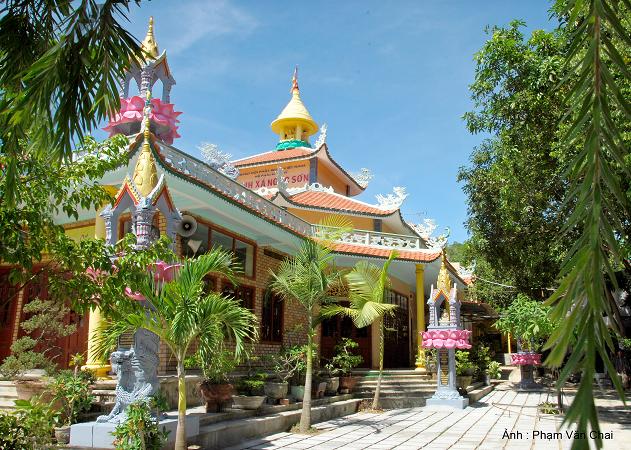 |
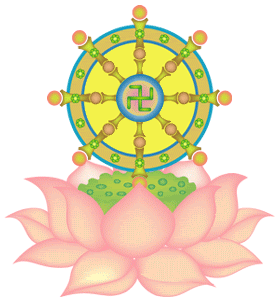 |

 Xem phản hồi
Xem phản hồi Gửi phản hồi
Gửi phản hồi